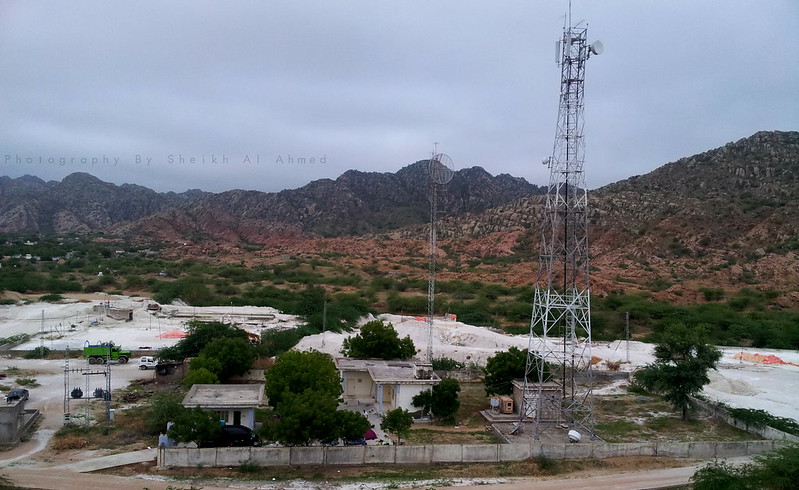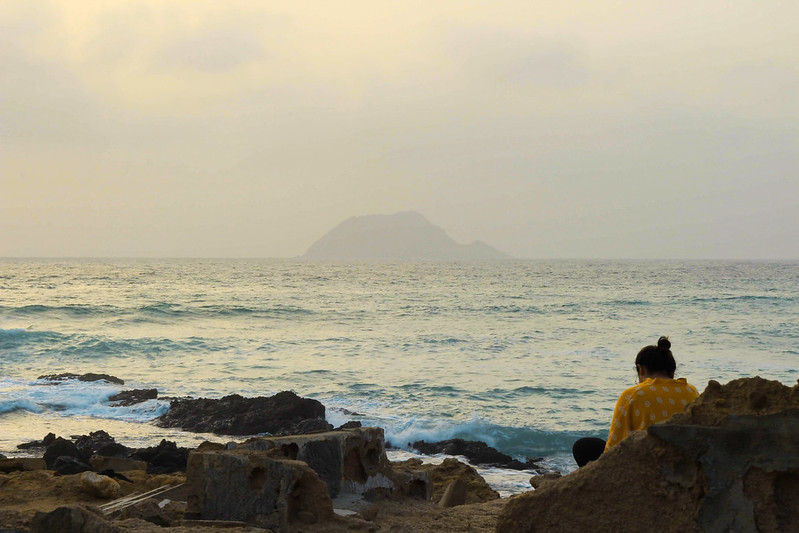Haleji Lake sits in the middle of Sindh’s hot, dry plains. It feels like a magical oasis where time moves slowly, and nature comes alive. Located just two hours from Karachi’s busy streets, this peaceful spot offers a break from city life. Here, you can trade the noise of traffic for the sounds of birds and rustling reeds.
At sunrise, the lake becomes a beautiful sight. Golden sunlight spreads across its calm surface, lighting up flocks of flamingos. These birds rise into the sky like pink clouds. For nature lovers, this place feels like paradise. For those interested in history, it opens a window into Sindh’s rich past.
A Lake Born of War and Wonder
Haleji Lake’s origins are as captivating as its stunning surroundings. According to local folklore, ancient saints are said to have blessed the area with water, giving it a spiritual significance. However, the lake’s modern story began in 1943, during World War II. At the time, Allied troops stationed in Karachi faced a severe water shortage. To address this crisis, British engineers came up with an innovative solution. They transformed a shallow, seasonal saltwater lake into a vast freshwater reservoir. This was achieved by constructing embankments and canals to divert water from the Indus River. The result was a 2,000-hectare freshwater sanctuary that not only provided water for the troops but also became a vital habitat for wildlife.
After the war ended, the lake’s role as a water source for military purposes diminished. However, its ecological importance began to grow significantly. Over time, the lake became a haven for diverse plant and animal species, particularly migratory birds. By the 1970s, Haleji Lake gained international recognition as Pakistan’s first Ramsar Site. This designation highlighted its status as a wetland of global importance, emphasizing its role in supporting biodiversity and ecological balance.
Today, Haleji Lake stands as a remarkable example of human ingenuity and nature’s resilience. It showcases how human intervention, when done thoughtfully, can coexist with and even enhance natural ecosystems. The lake is not just a historical landmark but also a thriving ecological treasure. It serves as a meeting point where history and nature intertwine, creating a unique and harmonious environment. Visitors to Haleji Lake can witness this blend of history and habitat, making it a place of both learning and wonder.
Journey to the Jewel of Sindh
Haleji Lake is situated approximately 70 kilometers northeast of Karachi and 120 kilometers southwest of Hyderabad, near the historic town of Thatta. This strategic location makes it easily accessible from two major cities in Sindh, Pakistan. The lake is set amidst dry, flat plains, which are typical of the region’s arid landscape. Scattered across the lake are small islands covered with tamarisk trees, which add to its scenic beauty. The lake itself is a mix of lush green marshes and open, shimmering waters, creating a striking contrast with the surrounding rough and barren terrain of Sindh. This unique combination of ecosystems makes Haleji Lake a visually captivating destination.
The climate around Haleji Lake is generally hot for most of the year, reflecting the typical weather patterns of Sindh. However, during the winter months, from November to February, the area experiences cooler temperatures and pleasant breezes. This seasonal change makes winter the ideal time to visit the lake. The cooler weather not only makes outdoor activities more enjoyable but also attracts a variety of migratory birds, enhancing the lake’s natural beauty.
One of the most remarkable aspects of Haleji Lake is the stark contrast between its vibrant ecosystem and the surrounding dry, rugged landscape. The lake’s green marshes and open waters provide a refreshing oasis in the middle of the arid plains. This contrast creates a unique and picturesque setting that appeals to nature lovers, photographers, and tourists alike. The serene environment, combined with the rich biodiversity, makes Haleji Lake a perfect escape from the hustle and bustle of city life.
Getting There:
By Car: Reaching Haleji Lake by car is convenient and comfortable. It takes about two hours to drive from Karachi via the N5 National Highway. The route is well-maintained, making the journey smooth and enjoyable. This option is ideal for those who prefer flexibility and want to explore at their own pace.
Public Transport: For those relying on public transport, regular buses and minivans are available from Karachi’s Sohrab Goth Terminal to Thatta. Once you reach Thatta, you can hire a taxi or an auto-rickshaw to cover the final 20 kilometers to the lake. This option is cost-effective and allows you to experience local travel.
Tours: If you prefer a guided experience, several Karachi-based tour operators, such as Sindh Adventures, offer day trips to Haleji Lake. These tours often include visits to Thatta’s UNESCO World Heritage Sites, providing a well-rounded cultural and natural experience. This option is perfect for those who want a hassle-free trip with expert guidance.
Haleji Lke A Birdwatcher’s Eden
Haleji Lake is a certified Ramsar site, recognized for its ecological importance. It is home to more than 200 bird species, making it a paradise for birdwatchers and nature enthusiasts. Between November and March, the lake transforms into a vibrant stage for migratory birds, offering breathtaking sights and sounds.
Greater flamingos are one of the main attractions during this season. They wade through the shallow waters, their pink feathers creating a pastel pink hue across the lake. Pelicans are another highlight, gliding gracefully in formation with their distinctive pouches filled with fish. Eurasian cranes and ducks from Siberia also visit the lake, filling the air with their rhythmic calls and adding to the lively atmosphere.
In addition to migratory birds, Haleji Lake is home to several resident species that provide year-round charm. Purple herons can be seen stalking through the reeds, while kingfishers dart across the water like flashes of blue lightning. Black-crowned night herons add a touch of mystery, emerging at dusk to forage.
The lake’s biodiversity extends beyond birds. It is also a habitat for marsh crocodiles, turtles, and rare fish species. These creatures are protected through initiatives led by WWF-Pakistan, which focus on combating invasive plants and promoting environmental awareness. These efforts ensure that Haleji Lake remains a thriving ecosystem for both wildlife and visitors.
Haleji Lake Experiences Beyond the Waters
Birdwatching: Haleji Lake is a haven for birdwatchers. To make the most of your experience, bring a pair of binoculars and plenty of patience. The Bird Hide, located near the lake’s northern edge, provides an excellent vantage point for observing birds without disturbing them. From here, you can enjoy unobstructed views of the diverse birdlife, including migratory and resident species.
Boating: For a more immersive experience, consider renting a rowboat. Glide through the lake’s tranquil channels and enjoy the serene surroundings. As you row, you’ll likely see herons soaring gracefully overhead and other wildlife going about their daily routines. Boating offers a unique perspective of the lake and its inhabitants.
Photography: Haleji Lake is a photographer’s dream, especially during the golden hours of sunrise and sunset. Head to Sunset Point to capture stunning reflections on the water, creating a magical atmosphere. Another great spot is where you can frame flamingos against the backdrop of the distant Kirthar Range. The contrast between the pink flamingos and the rugged mountains makes for a breathtaking shot.
hatta: Explore 14th-century mosques like Shah Jahan’s iconic Jamia Masjid.
Makli Necropolis: Wander among 500,000 intricately carved tombs at this UNESCO World Heritage Site.
Keenjhar Lake: Sindh’s largest freshwater lake, perfect for a s
Plan Your Visit: Tips for a Seamless Trip
When to Go: November–February for migratory birds; avoid scorching summer months.
Entry Fees: PKR 200 for adults, PKR 50 for children (as of 2023). No permits needed for general visits, but professional photography requires prior approval.
Facilities: Basic restrooms and picnic spots are available. For lodging, consider Thatta’s PTDC Motel or return to Karachi.
Pack Smart: Sunscreen, hats, reusable water bottles, and a field guide to birds.
Stories Carved in Time and Water
For the people of Thatta, Haleji Lake is both a treasure and a source of income. Firstly, fishermen share stories about the lake’s “guardian crocodiles.” They believe these crocodiles protect the lake’s waters. Secondly, every winter, the Haleji Bird Festival takes place. This festival celebrates the birds that visit the lake. Additionally, it includes guided walks and art displays. These activities help people feel proud of protecting the lake. Moreover, a local elder named Noor Bibi says, “This lake is a gift from our ancestors. We show respect by keeping it alive.” In conclusion, the lake is deeply valued by the community for its cultural and environmental importance.




